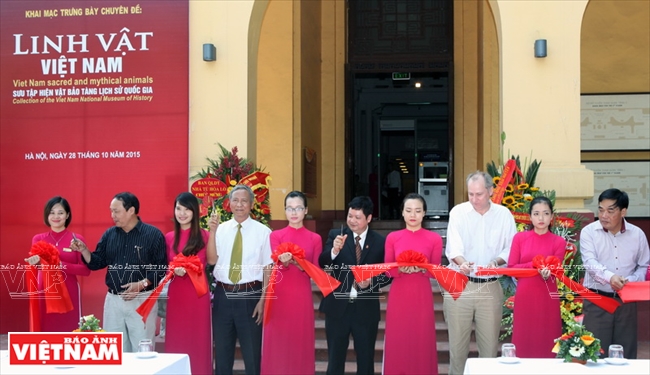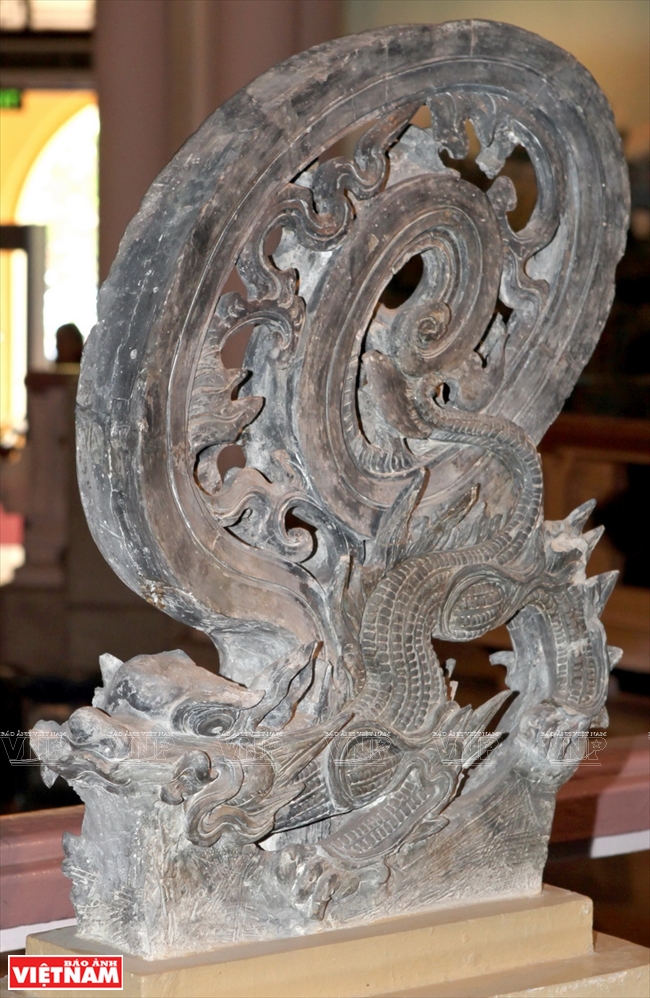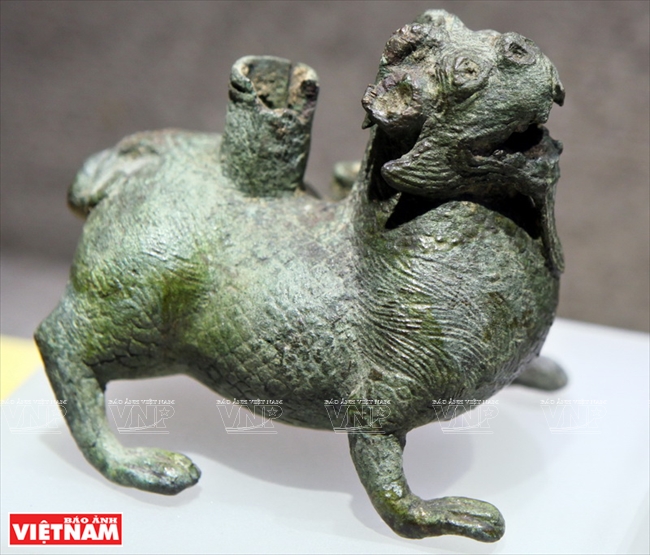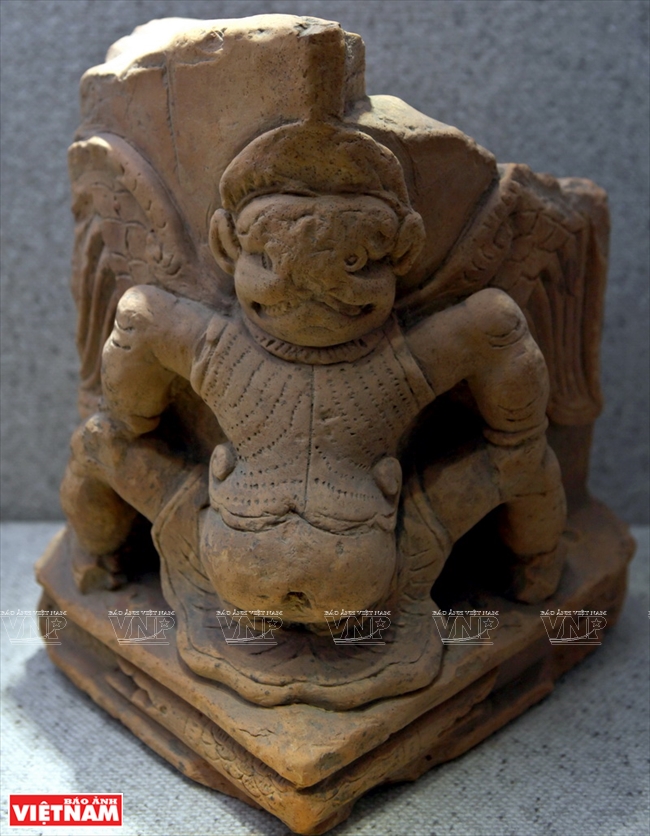 The ribbon cutting ceremony to open the exhibition “Vietnamese sacred animals” at the Vietnam National Museum of History.
 |
Sacred animals have been revered in various forms, created by the Vietnamese or influenced by foreign cultures. Each of these divine creatures symbolizes unique qualities that align with traditional culture and the characteristics of the historical periods in which they originated and flourished.
The exhibition presents a curated collection of over 100 remarkable artifacts, neatly divided into 27 categories, currently on exhibit at the prestigious Vietnam National Museum of History. Among the exquisite exhibits are prized possessions such as the iconic totems of the Dong Son civilization, including dragons, unicorns, longma (a mythical creature, part horse and part dragon), as well as elephants and the 12 Chinese zodiac animals.
The exhibition titled “Vietnamese Sacred Animals” has been curated with the purpose of providing the public with a deeper understanding of the diverse and distinctive sacred animals of Vietnam. This exhibition endeavors to showcase their evolutionary stages, defining characteristics, artistic styles, utilization, and cultural significance. By exploring these aspects, the exhibition seeks to instill a sense of pride in Vietnamese culture while simultaneously raising awareness regarding the cultural symbols employed.
The exhibition will be open until the end of 2015.
|
Some sacred animals on display at the exhibition:
The bronze statue of Tich ta, created between the 1st and 3rd century, depicts an Oriental rooted animal resembling a winged lion. This mythical creature is believed to have protective powers against demonic forces and bad luck.
This terra cotta object from the Ly Dynasty (11th-13th century) features a carved depiction of a Garuda holy bird.
Nghe is a statue of a mythological lion-headed, dog-bodied animal, created using green and white ceramics during the Le Trung Hung period in the 17th century. This creature is a legendary symbol in Vietnamese culture and is often found at the entrances of pagodas and temples.

Statues of the 12 animal designations made of jade in the Nguyen Dynasty (19th-20th century) are used to count time according to the lunar orbit in the palace.
These white ceramic statues depict a couple of snakes with human heads. They were created during the Nguyen Dynasty in the 19th-20th century. |
















